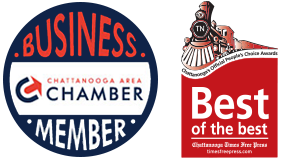While many workers are quitting their jobs, most are actually switching jobs. Employers in all sectors are working to meet demand and fill vacancies, but this competitive labor market can present opportunities for strategic leaders.
Forward-thinking employers use data to understand the benefits priorities of their employees and candidates and craft a competitive recruitment and retention plan.
Survey says: Benefits still make a difference
Benefits packages are impacting worker decisions to leave a current job or accept a new one. Pew Research surveyed U.S. workers who left a job in 2021 and 43% said that not having good benefits was a reason for leaving.
A Harvard Business Review analysis of the Great Resignation agreed with the importance of offering the right benefits to attract the right candidates. The authors conclude that “the companies best able to attract and retain talent will be those offering benefits that address the changing needs of workers.”
This sounds obvious in principle but in practice presents two essential, yet difficult questions:
- How do you identify the changing needs and priorities of your workforce and desired candidates; and
- How do you determine whether your benefits package addresses those needs?
The answer to both questions is demographic data and benchmarking.
Identifying needs and priorities
Demographic data and benchmarking should inform your recruitment and retention goals and strategy. As the Pew study indicates, lacking benefits can create a retention liability. Workers may be enticed by other employers with overall better benefits, or a benefits package that better addresses that employee’s particular needs. Understanding this requires access to and analysis of data.
What benefits are your employees looking for? Your consultant should be proactively conducting internal demographic studies as an important step to finding this answer and improving your retention. Once you and your consultant understand the composition of your workforce, you will be able to make more informed decisions on where to invest your benefits dollars and draw useful comparisons to competitors through benchmarking. The employees you’re looking to retain other employers are looking to recruit. Benchmarking tells you what rivals are offering and how your benefits compare.
Similarly, for recruitment, identify what candidates you’re looking for and the differentiators you need to attract those candidates. Is your organization trying to promote equal gender representation or do you want to be a desirable employer that can attract any candidate? Presenting concrete studies during strategic planning with your consultant enables and facilitates a more productive conversation about your organization’s HR, retention and recruitment goals.
Evaluate your data
By looking at industry trends, benchmark data and demographic surveys, your consultant can identify patterns and find out what your prospective employee populations are looking for. For example, Gen Z tends to be acutely interested in social consciousness, wellness initiatives and the charitable goals of their employer. Organizations looking to recruit this newest generation of the workforce can create a competitive advantage by developing these areas.
Meanwhile, millennial employees or those with families may prioritize other benefits, such as employee assistance programs, disability benefits, paid family medical leave, fertility services, childcare and flexible work from home arrangements. Organizations trying to attract or retain these employees should make sure that their offerings in these areas keep pace with the market.
Your benefits consultant can help you identify these differentiators and, more importantly, help you fit them into your budget.
Listen to employees
Your employees are already directly and indirectly communicating. Conducting surveys and listening to feedback from employee groups are traditional and useful ways to gather information. However, don’t overlook the indirect way employees communicate through their benefits use. Their health plan and benefits elections offer insight into their priorities, as does the way and extent they use their benefits.
Take a holistic look at your organization by pulling data from every source possible, including claims and plan utilization. Look at this through the different lenses your demographic studies provide, including salary, age and gender, to fully understand the needs and priorities of your own employees.
Understanding your organization’s gaps and areas for improvement, and how you stack up against your competition, is essential to maximizing your retention efforts.
Consult your benefits broker about how to leverage benchmarking data and establish a holistic view of your benefits package. Your consultant can use this to create a benefits plan that aligns with your strategic, long-term plan.
Article from Benefits Pro
Written by Pam Smith – Vice President of Account Management at Corporate Synergies


